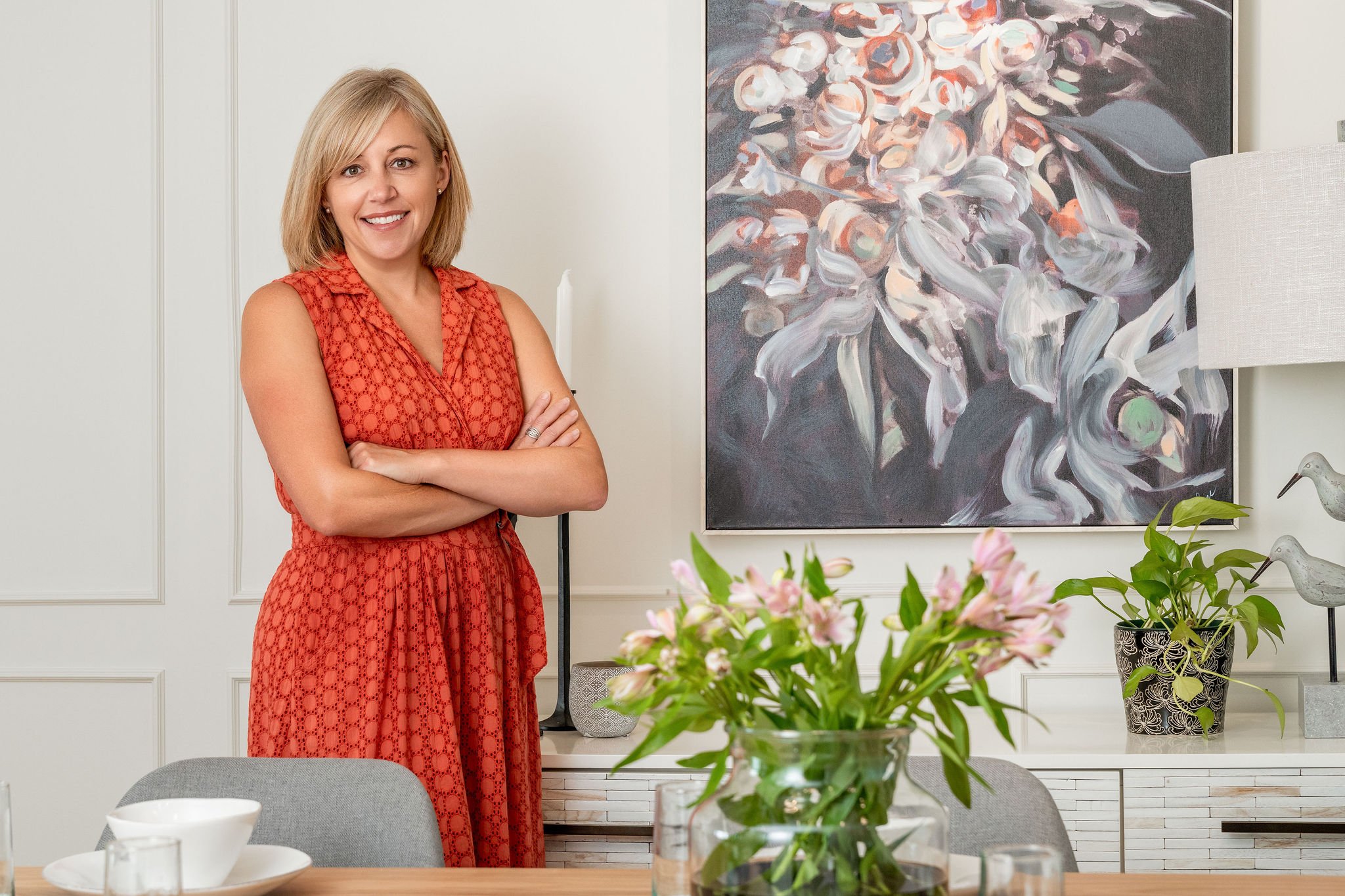The Lost Touch: Why Designing Your Home Feels So Hard
We live in a time where nearly everything can be delivered to our doorstep: groceries, furniture, even entire pre-made homes. But somewhere along the way, as convenience took over, we lost something essential—touch—and ultimately, connection with our senses.
As an interior designer, I’m encountering more and more people buying items for their homes that just don’t work: visually, functionally, or emotionally. The chair is too stiff, reeks of chemicals, and is as light as a feather; clearly not made of solid wood. The rug sheds like a golden retriever. The lighting feels cold and clinical. The list goes on.
And here’s the kicker: these items often end up in landfills because resale has become nearly obsolete.
Why? Because we’re buying with our eyes—not our senses. We need to touch it, feel it, smell it, and even sit with it for a while. Good design can’t be done in a vacuum or through a screen.
The Sensory Cost of Shopping Online
There’s something magical about running your fingers across a linen swatch, sitting in a chair before buying it, or watching how a paint colour shifts in natural light in your space. These small, sensory moments used to be a built-in part of the design process. But with the rise of online shopping and the decline of physical showrooms, those moments are sadly disappearing.
I still have the privilege of exploring products in real life because of my work; but the average homeowner doesn’t. Instead, they’ve been forced to rely on what’s accessible: big box stores offering mediocre products or online retailers where you cross your fingers and hope for the best.
We’ve replaced tangible, sensory-driven exploration with scrolling. And while online shopping is convenient, it often fails to connect us with what truly feels right in a space. Colours are often off, textures misrepresented—thanks to poor photography or the settings on your screen.
What We’re Losing
Here’s what I believe we’re missing:
Sensory alignment: Products that feel wrong—too scratchy, too slippery, too loud—create daily discomfort.
Personal confidence: Without real-life reference points, people start questioning their instincts.
Sustainability: A growing pile of “meh” purchases becomes a silent contributor to waste.
Emotionally resonant homes: When we choose based on trends or pixels, instead of our sensory requirements, we disconnect from what our homes could truly offer: comfort, joy, ease. Places that tell our stories.
A New Framework for Home Design
In my experience, great interior design isn’t just about how a space looks. It’s about how it feels. It supports you. It tells your story. To get it right, you need to consider three key elements:
1. Your sensory needs
What textures calm you? What lighting lifts your mood? Do you crave softness or structure? Every space has a sensory fingerprint; understanding yours is key to making better choices. Document it and implement it into your space.
2. Your values and personal story
Your home should reflect who you are—not just where you shop. Maybe that means incorporating heirlooms, choosing ethically made furniture, or designing around how your family actually lives. It takes time to curate this. Remember: the joy is also in the journey toward completion.
3. Your design style + principles
Yes, style still matters. And knowing which styles feel most “you” is a beautiful start—whether you’re transitional, a mix of boho and traditional, or anything in between. Once you’ve named it, embrace it. Then layer in the fundamentals: flow, balance, scale, and proportion. That’s the secret sauce that makes your space come together.
Realizing It In Practice
This is something I’ve been diving into with participants in my Home Reimagined workshop series. When people touch actual materials. When they feel the difference between matte and polished, or compare the softness of wool versus velvet—it clicks.
The most common reaction?
“I had no idea I’d love that.”
It’s a reminder: you don’t always know what resonates until your body and your senses are part of the process.
Where to Go From Here
The digital age isn’t going anywhere and thankfully, there are some beautiful pieces to be found online. But if we want homes that truly nourish us, we have to return to our senses. We need to slow down, explore in person when we can, and make decisions that honour who we are and how we want to feel.
I’ve been bringing this process back into my Home Reimagined workshop series, and the feedback has been exactly what I hoped for: clarity, confidence, and a deeper understanding of what people truly need in their homes to feel calm and joyful.
So take your time. Explore. Curate your home with intention. Don’t just fill it with stuff, fill it with stories. With things that speak to you and support you.
Your home is an evolution and a reflection of you. It deserves your time, attention, and exploration.
Pinterest won’t give you the right answers—you will.
Because a beautiful home isn’t just one you admire from across the room; it’s one that meets you where you are and holds you fully. That’s your secret sauce and it needs a lot more than a Wi-Fi connection to come to life.



